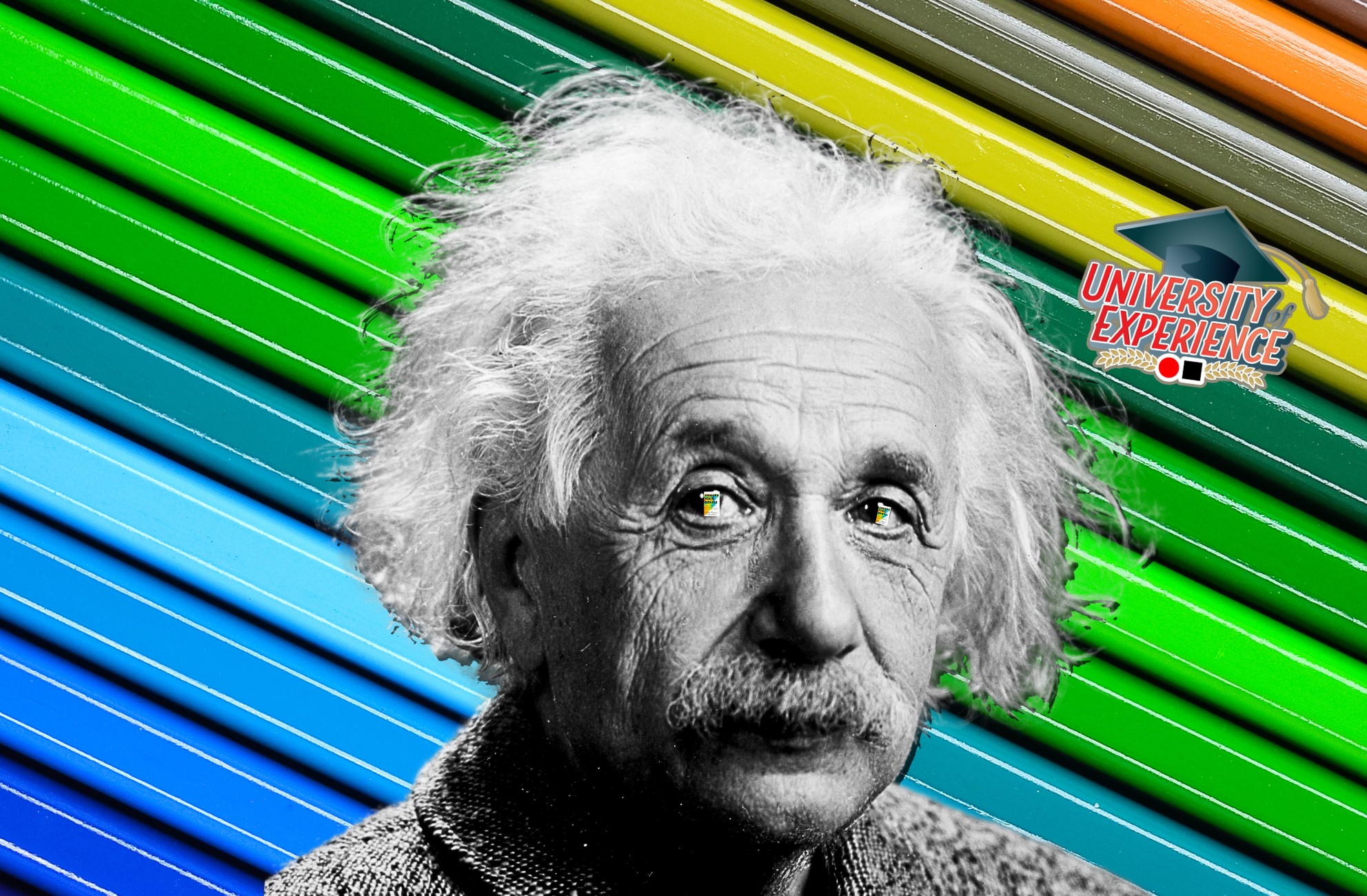By Manuel “Bobby” Orig, Director, Apo Agua
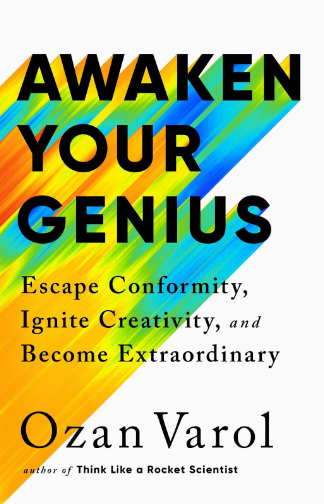
AWAKEN YOUR GENIUS
By OZAN VAROL
Escape Conformity, Ignite Creativity & Become Extraordinary
We say some people march to the beat of a different drummer. But implicit in this cliché is that the rest of us march to the same beat. We sleepwalk through life, find ourselves on well-worn paths that were never ours to walk, and become a silent extra in someone else’s story.
Extraordinary people carve their own paths as leaders and creators. They think and act with genuine independence. They stand out from the crowd because they embody their own shape and color.
We call these people geniuses – as if they’re another breed. But genius isn’t for a special few. It can be cultivated.
This book will show you how. You’ll learn how to discard what no longer serves you and discover your first principles – the qualities that make up your genius. You’ll be equipped to escape your intellectual prisons and generate original insights from your own depths. You’ll discover how to look where others don’t look and see what others don’t see. You’ll give birth to your genius, the universe- denter you were meant to be.
Praise or the book:
This book is for anyone trying to create the mental space and spark to be more original, innovative, visionary in the way they think. It’s fantastic -evidence-based and human-scale, full of advice you can really implement in your daily life.
—CAROLINE WEBB, author How to Have a Good Day
Senior Adviser, McKinsey
About the author:
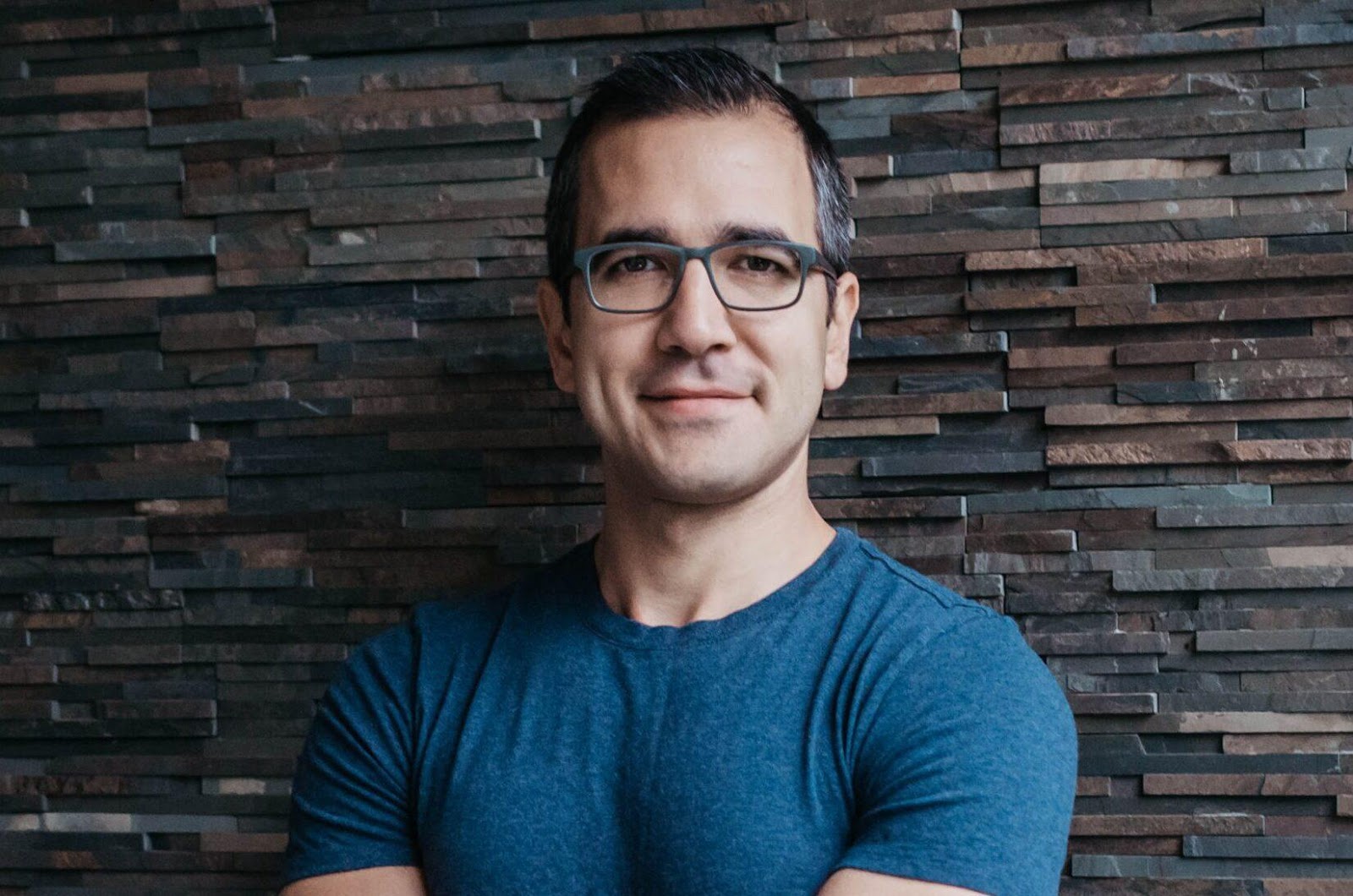
Ozan Varol has been a rocket scientist, an award-winning professor, and is now a best-selling author. An acclaimed expert in creativity, innovation, and critical thinking, he has been featured in the Wall Street Journal, Newsweek, BBC, TIME, CNN, and the Washington Post. His first book, Think Like a Rocket Scientist, was translated into twenty-five languages and named a top book of 2020 by Inc. com.
INTRODUCTION
It’s Time to Wake Up
We have little idea how we ended up here. We just know we’re here, so we keep going. We sleepwalk through life. We get stuck in our rehearsed way of operating in the world. We choose things out of habit, not desire. We reaffirm the same beliefs, think the same thoughts, and make the same choices that lead to the same outcomes.
In a very real sense, our past becomes our future. What we chose earlier dictates what we do today. We drag ourselves into the same predictable tomorrow by reliving yesterday.
We become defined by beliefs that aren’t our own. We find ourselves on well-worn paths that were never ours to walk. We follow directions from other people who don’t know us and who have no idea where we want to go. We color between the lines of sketches drawn by someone else.
As a result, we become a supporting actor in our own life.
The price we pay for living in this world is betraying who we are – and disconnecting from the genius within.
Inside you is a vast reservoir of untapped wisdom. You are made up of every experience you’ve had, every story you’ve heard, every person you’ve been, every book you’ve read, every mistake you’ve made, every piece of your beautifully messy human existence. Everything that make you you – a huge treasure waiting to be explored.
All that wisdom is concealed under the masks you wear, the roles you play, and the decades of social conditioning that have taught you to think like your teachers, to think like your parents, to think like your tribe, to think like influencers and thought-leaders – to think like anyone but yourself.
As a result, we become strangers to ourselves. Many of us go from birth to death without knowing what we really think and who we really are.
Here’s the thing. No one can compete with you at being you. You’re the first and the last time that you’ll ever happen.
Think of humans as individual pieces that combine to build a beautiful collective. Each piece is important. Each piece is idiosyncratic. The puzzle cannot be completed with a billion corner pieces all of the same shape and color. What makes each piece different is also what makes it valuable to the collective. If you copy or conform to the other pieces, the world loses its full shape and color.
The puzzle among us who embody their true shape and color are extraordinary. They stand out from the crowd – because they don’t copy the crowd. They’re not at the mercy of outside force – because they sculpt those forces. They can’t be misdirected by others – because they self-author their life.
These extraordinary thinkers are geniuses. By genius, the author doesn’t mean great talent or intelligence. A genius, in the words of Thelonious Monk, “is the one most like himself.” Genius, in its Latin origin, refers to the attendant spirit at birth in every person. Each of us is like Aladdin, and our genie – or our genius – is bottled up inside of us waiting to be awakened.
Once they awaken their genius, extraordinary thinkers share it with the world around them. They channel the energy that brought them into existence and turn it into the art only they can create. They don’t just resist or disrupt the status quo – they reimagine the status quo and change the foundation of what’s possible. In the words of Apple’s “Think Different” campaign, they’re misfits, rebels, troublemakers – round pegs in square holes.
UNEDUCATE
Gilliane Lynne was considered a problem child. She did terribly in school. She couldn’t sit still, let alone focus. She was so hyperactive that people would call her Wriggle Bottom.

This was the 1930’s in Britain, and the acronym ADHD (attention-deficit/hyperactivity disorder) didn’t even exist. Concerned that her child had a disorder, Lynne’s mother took her to see a doctor.
The doctor’s visit would radically change the course of Lynne’s life.
What’s important is what the doctor did not do. He did not label Lynne as “difficult.” He did not tell her to calm down. He did not automatically medicate her.
Instead, he followed a hunch. He turned on the radio and asked Lynne’s mother to leave the room with him.
The minute the adults left, Lynne’s body began to move. As the music filled the air, she couldn’t contain herself and started dancing all around the room, even leaping on the doctor’s desk. “What I hadn’t notice,” Lynne writes in her autobiography, “was that the door was one of those beautiful old glass ones with etched designs, through which the doctor and my mother were watching.”
As he watched Lynne dance, the doctor smiled and turned to her mother.
“There’s nothing wrong with this child,” he said. “She is a natural dancer – you must take her immediately to dance class.”
How amazing was this doctor?
That prescription – Take her to dance class – changed Lynne’s life.
When she arrived at dance school, Lynne found a whole room of people just like her – “people who had to move to think,” – as she put it.
What followed was a lifetime of dance. Lynne danced in the Royal Ballet and choreographed Cats and Phantom of the Opera, two of the longest-running shows in Broadway history. Looking back at that moment in the doctor’s office, Lynne says, “I really owe my whole career … and I suppose my life to this man.”
Most schools treat students the way airlines treat economy-class passengers. The same bag of pretzels is served at every cramped seat. Regardless of their unique perceptions and curiosities, every student is served the same curriculum, the same lessons, and the same formula.
Efficient? Yes. Effective? No.
It’s hard to make people interested in a subject they don’t care about. When he was a student, the astronomer Carl Sagan hated calculus. He believed that calculus was invented by ill-meaning educators for “intimidation purposes.”
His attitude changed only after he picked up the book Interplanetary Flight by Arthur Clark. Clark used calculus to calculate interplanetary trajectories. Instead of being told “calculus is good for you,” Sagan could now see for himself why calculus was helpful to know. He could use it to solve problems that he thought were worth solving.
Telling children to ‘attend this” or “do that” isn’t good enough – in the same way that the instruction “learn calculus” wasn’t good enough for Sagan. But if you allow people to follow their own interests – and commit to a destination they care about – they come alive.
Spend less time on the “what,” as in Here’s what we are doing, and more time on the “why,” as in Here’s why we’re doing it. Show your child how geometry and fractions will help them fix their bike. Explain to your employees how the new marketing strategy they need to execute will help land a worthy moonshot. Rally your customers by embedding a purpose into the heart of what you do.
If you do this, the student will become a learner. The employee will become a team member. And the customer will become a passionate advocate.
Because the trouble isn’t with them.
They just need to go to dance class.
And once they are moved, they will move the world.
WHAT DID YOU LEARN IN SCHOOL TODAY
The word educate is related to the Latin word eductus. And eductus means to “educe” or to “draw out” of a “person something potential or latent.” In other words, education is supposed to help students develop and ripen what’s already within them.
Most education systems do the opposite.
There’s no drawing out. There’s only stuffing in – of knowledge and facts. The teacher fills the empty tank of young minds with the “content” of the course. The student absorbs knowledge by osmosis and regurgitates it on the exam. Education is all about the passive accumulation of yesterday’s answers to yesterday’s questions. Students aren’t taught to overhaul old facts, generate tomorrow’s knowledge, and answer questions that haven’t even been asked.
To memorize isn’t to understand.
You can’t learn yoga by memorizing yoga poses. You can’t learn to ride a bike by reading a book about it. And you can’t learn science by memorizing the definition of osmosis. There’s a difference, as Richard Feyman says, “between knowing the name of something and knowing something.”
Although educators pay lip service to valuing creativity, many end up discouraging it in practice. Research shows that teachers rate highly creative students as less desirable in the classroom. This finding has been replicated in numerous studies: Creative students are unconventional students, and unconventional students are often disfavored by their teachers.
As a result, schools end up unteaching creativity. Kids unlearn how to make art, they unlearn how to speak up, and they unlearn how to take initiative and ask critical questions. They are rewarded for thinking like the teacher – not for thinking for themselves or questioning what they learn.
Most exam booklet should have the words LET’S PRETEND inscribed in big block letters on the cover, just so everyone is aware of what’s about to take place.
Let’s pretend that the questions on this exam are important.
Let’s pretend that there’s a single, absolutely right answer to every question.
Let’s pretend that the answer has been determined by someone far smarter than you.
Let’s pretend that the answer is fixed all the time.
A typical question in this game of “Let’s pretend” might be “Who discovered America?” A question like this closes off all inquiry by demanding one-dimensional answer like “Christopher Columbus.”
Yet a far more interesting question is, “How do you discover who discovered America?” The question leads to even more questions: “What does discover mean?” “Weren’t there millions of people already living in America when the Europeans arrived?” “Were the native people always here?” “If not, how did they arrive? By foot? By boat? From where?” “Where would you look to find out?”
These questions – which will defy easy answers – are the types of questions that students will encounter in real life. Students leave school perfectly equipped to thrive in a world that doesn’t exist outside the classroom. They feel lost because, in life, there are no clearly defined problems with a single, clearly defined solution.
Later on in life the authority figure might change – say, from a teacher to a manager – but the underlying approach remains the same. The manager demands compliance, and the worker conforms. The business then gets bogged down by dogma and resistance to change.
So let’s stop asking, “What did you learn in school today?” That question perpetuates the outdated conception of education as an endeavor whose only purpose is to teach students the right answers.
Instead, let’s ask, “What made you curious today?” or “What questions are you interested in exploring?” or “How would you figure out the answers?” Or any other question designed to get students to think for themselves and to put a question mark at the end of conventional wisdom.
If an employee comes to you and says, “What should I do about this problem?,” don’t immediately deliver a quick and efficient fix. Let them suggest solutions on their own. When you spoon-feed right answers to others, you’re acting like a personal trainer who “helps” clients by lifting their weights for them.
In the end, the ability to reimagine conventional wisdom is far more important than the ability to regurgitate it.
DISCARD
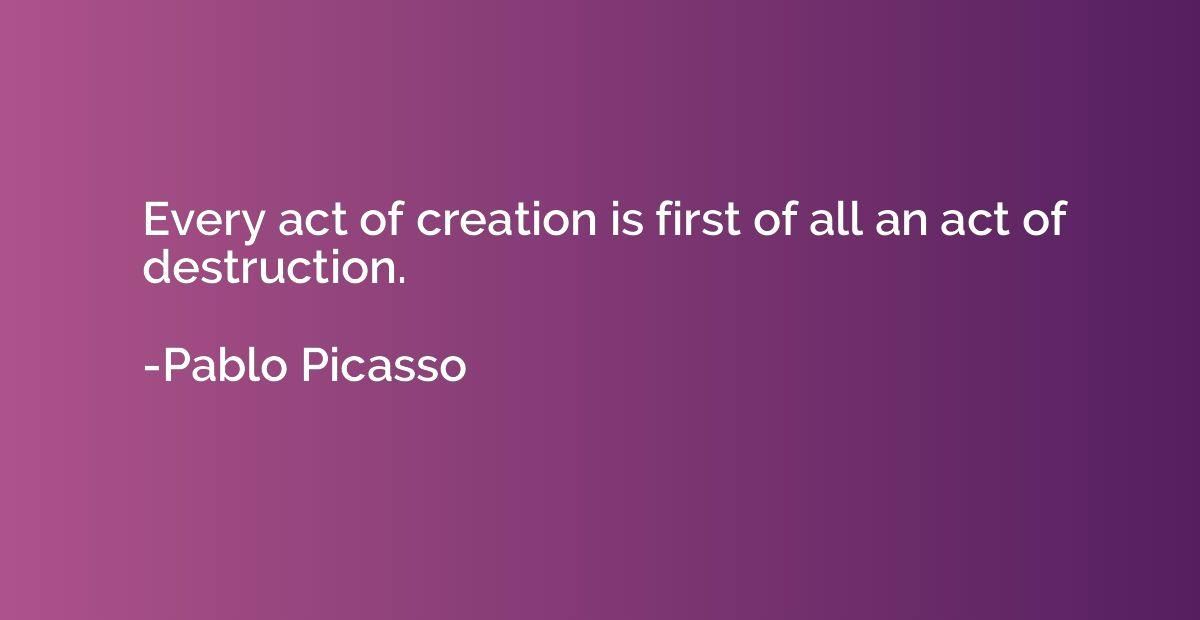
The snake is the ancient symbol of transition.
Unlike human skin, the skin on a snake doesn’t grow as the animal grows. During its lifetime, the snake’s insides outgrow its outsides, and the animal reaches a point where it must discard the older skin in favor of the new.
This process is uncomfortable. The snake rubs and scratches until it’s able to literally crawl out of its old skin. When the snake succeeds in completing the process, a new vibrant skin emerges in place of the old. But when the snake fails to shed its skin, it can go blind and die.
Over the course of the author’s life, he has worn and shed many skins: rocket scientist. Lawyer. Law professor. Author and speaker.
Each transformation was preceded by an uncomfortable feeling that something wasn’t quite right. He’d make some adjustments here and there, but there came a point where his old skin couldn’t sustain his inner growth. What once made sense no longer did.
We often mistake ourselves for our skin, but our skin isn’t us. Our skin is just what we happen to be wearing right now. It’s what suited us yesterday. Yet we often find ourselves unable to leave what we’ve outgrown. We stick to a job that’s great on paper but soul-sucking in practice. We remain in a dysfunctional relationship, refusing to recognize that it’s not working. We sacrifice the possibility of what could be for the self-constructed prison of what is.
Discarding runs counter to conventional wisdom. We’ve all heard that well-intentioned advice: Don’t give up. We prize grit and perseverance and attach a huge stigma to quitting. Quitting is undignified. Quitting means you failed. “Winners never quit, and quitters never win,” as the popular saying goes.
Yes, many people quit when they should persist. You shouldn’t give up on your goal simply because things got hard or because you fell down a few times.
Yet many people persist when they should quit. Grit is important – but not if it blinds you to other possibilities. Determination is meaningless if you’re repeatedly doing what’s not working or clinging to something long after it has outlived its purpose.
Make no mistake: Peeling back your old skin is painful and jarring. There’s a certainty to it. You’ve worn it for years, if not decades. It makes you feel safe and comfortable. Over time it has become your identity, so cultivating a new skin requires changing who you are.
Adding is easy, but subtracting is hard – really hard. When we’ve invested time and resources in building something, the sunk-cost fallacy kicks in and prompts us to stay the course. We behave like a snake that stubbornly clings to its old, dead skin as the new skin urgently tries to emerge.
If you’ve been successful on a path you’ve outgrown, you’re up against another formidable foe: your ego. The part of you that gets off on titles, pay raises, and accolades will not go down without a serious fight.
But there’s another important question you should be asking:
What will I gain if I let this go?
If life feels heavy, you might be choosing to carry a raft that no longer serves you. If it feels hard to fit into old patterns, old relationships, or old thoughts – if you’re tired in participating in business as usual – it might be time for you to do some shedding. Even if the new skin doesn’t perfectly fit you, discarding the old skin will give you a much-needed sense of agency over your life. Proving to yourself that you’re in charge and that you can create your future is a priceless gift.
To keep growing and stay healthy, plants must be pruned. Humans work the same way. Once you prune what’s no longer serving you – once you stand naked before the wind with layers of old skin shed – you’ll begin to see yourself.
As you eliminate who you are not, you will discover who you are.
DIVERSIFY YOURSELF
Diversification is a protection against ignorance. It makes very little sense for those who know what they’re doing.
—Warren Buffett
Imagine eating the same thing every day, breakfast, lunch, and dinner.
That’s what millions of people in Ireland did in the early 1800s. They ate almost exclusively potatoes of the Lumper variety.
This single-crop system kept the population fed – until steamships from the Americas brought them an unwelcome visitor to Irish shores.
The visitor was a pathogen called Phytophthora infestans. The name is Greek in origin. It means plant destroyer. The pathogen rapidly obliterated Irish potato crops, turning those essential tubers into inedible slime.
The Great Famine that followed lasted seven years. By 1852, one million people had perished, and a decade after the famine, more than two million had left the country for good, causing the population to plummet by nearly 25 percent.
Another major contributor to the famine was the lack of genetic diversity in Irish potato. Much of the country’s poorest depended on the Lumper variety, which proved to be particularly vulnerable to the plant destroyer. As a result, the pathogen decimated both the crops and the people who depended on them for survival.
A lack of diversity in any system – whether it’s agriculture, business, or a human being – renders it vulnerable. Companies become obsolete after they overinvest in the same potato varieties year after year. If you’ve defined yourself only as a seller of physical film, then, like Kodak, you’ll ignore the digital revolution.
Consider RIM, which developed the Blackberry brand of smartphones. “I’m a poster child for not doing anything but what we do,” said Jim Balsillie, the company’s former chair during an interview. The interviewer asked Balsillie whether he was thinking of diversifying RIM beyond the Blackberry. His response? “No. We are a very poorly diversified portfolio. It either goes to the moon or it crash to the earth,” Balsillie said. Steady as it went – until it hit an asteroid called the iPhone. In just five years, from 2009 to 2014, RIM’s market share of smartphones in the U.S. plummeted from nearly 50 percent to less than 1 percent.
Xerox’s legendary research lab, PARC, invented the first personal computer including pivotal innovations like the mouse, Ethernet networking, laser printing, and the graphical user interface. Then, they did nothing with it. Xerox was after all a manufacturer of office copiers, not computers. Instead, Xerox gave an official tour of PARC, including the personal computer it had developed, to a man named Steve Jobs. Jobs took meticulous notes, hired away PARC’s top talent, and then, inspired by what he had seen, created the Lisa, the precursor to the Mac.
If these organizations hadn’t tied their identities to their most successful product, their Lumper potato, they might have seized these new opportunities when they arose.
The obstinate grip of a single personality also affects people. We’re taught to show only one part of ourselves – one dimension, one personality, and one profession. Hence the cliché questions, “What will you be when you grow up?” or “What do you do for a living?” the underlying implication is clear: You are defined by what you do – you’re a doctor, a lawyer, or an engineer – and what you do is a single, static thing.
If your identity is bound up with your profession, what happens if you lose your job – or decide you don’t want to do it anymore? What happens when that specialty you’ve spent a lifetime perfecting becomes obsolete?
The only escape, the only path to genuine resilience, is through diversity. Treat yourself like your financial investments and hedge your bets. One you figured out your first principles, mix and remix them. Pursue multiple interests. Diversify yourself. If you have a diversity of traits and skills that you can recombine and repurpose, you’ll enjoy an extraordinary advantage to evolve with the future.
Diversification doesn’t just ensure your resilience. It also becomes a source of new strength. “To create,” as Francois Jacob said, “is to recombine.” Successful creators tend to follow their curiosity and branch out: Rappers write novels, Actors paint. Entrepreneurs make films. Intuitively, they understand that each medium of expression informs others, that time spent on a secondary project adds richness and depth to their primary work, and that pursuing multiple avenues provides a liberating sense of security. We all need our own R&D departments where we can experiment with new dimensions.
THE PROBLEM WITH CHASING GOLD MEDALS
Jason Alexander, famous for playing George Constanza on Seinfeld, was nominated eight times for an Emmy award. He never won.
Glenn Close was nominated eight times for an Oscar. She never won.
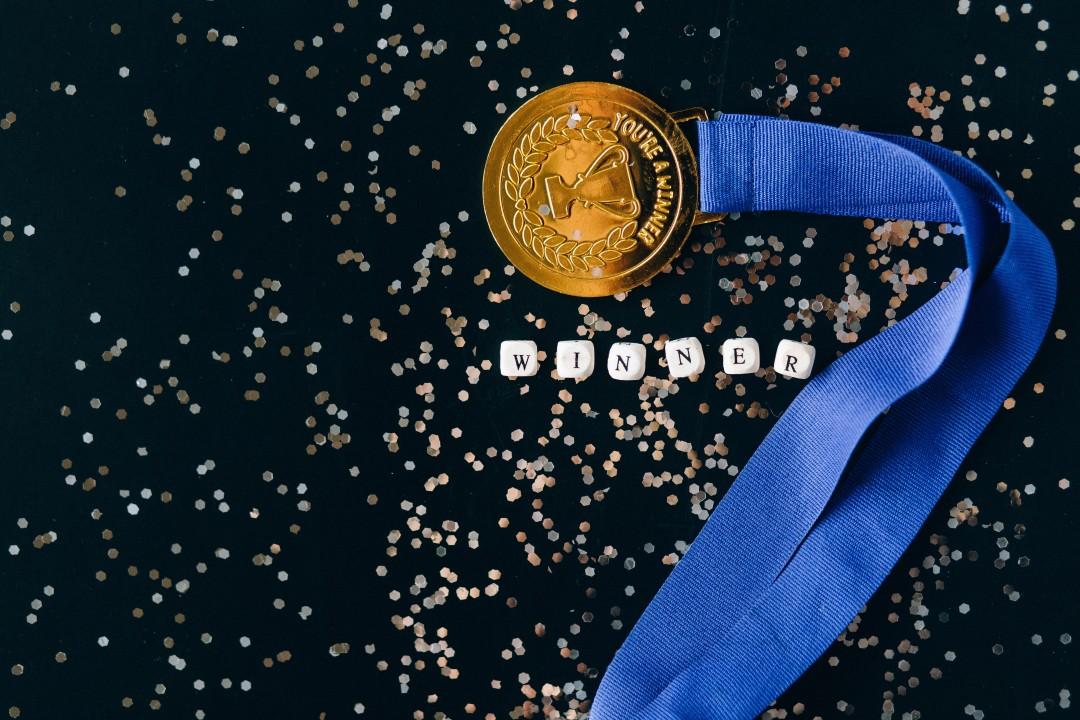
Carl Sagan was nominated for membership in the National Academy of Sciences, one of the highest honors in science. He was rejected. Most of the academic establishment disdained Sagan for popularizing science and voted against his membership.
Isaac Asimov didn’t hit the New York Times best-seller list until his 262nd book. That’s 43 years writing 261 consecutive non-best-sellers.
Does this mean that Close and Alexander are bad actors? That Sagan was a lousy astronomer? Or that Asimov’s first 261 books all suck? Of course not.
Yet, in our own lives, we often define our worth by referring to the number of medals we have collected along the way. We want to be chosen by the people who were chosen before us. We want the external validation, the pat in the back – the gold medal. We let someone else determine whether we’re good enough. Once we get approval, life becomes a tightrope to not lose that approval.
“I have made the most wonderful discovery,” Napoleon is purported to have said. “Men will risk their lives, even die, for ribbons!” We focus on collecting ribbons – social media followers and impressive job titles – forgetting that vanity metrics rarely move the needle on what matters. We seek applause instead of improvement. We pursue goals that are unaligned with ourselves. We play meaningless games and win meaningless prizes.
The more we value vanity metrics, the more we fear failure. The more we fear failure, the more we strive for guaranteed success. And the more we strive for guaranteed success, the more we color inside the lines and the less remarkable we become.
If you base your internal compass on external metrics, it will never be stable. The compass needle will always waver because approval is fickle. Stability requires a compass that’s based on your own values, not the values of others.
Alexander, Close, and Sagan couldn’t control how the academy members voted. Asimov couldn’t control how many people bought his books. You can’t control whether your boss gives you a promotion or whether you get the job you want.
If we were assessing people based on outcomes beyond their control, we’d assume that every lottery winner must be a genius.
A simple question for you: Is this within my control?
Don’t hand the controls of your life over to any other pilot. You have your own sense of direction and balance. Focus on what’s yours to shape – and ignore the rest.
LOOK WHERE OTHERS DON’T
If it didn’t happen in your life before, then you’re not paying attention you don’t think it’s possible. But almost all important events never happen in your life before.
—Ray Dalio
On November 24, 1963, Clifton Pollard woke up at 9 am. It was a Sunday, but he knew he would probably need to go to work.
His wife cooked him breakfast but a phone call interrupted the meal. It was Pollard’s supervisor from work – a call he had been expecting.
“Polly,” his supervisor said, “could you please be here by eleven o’clock this morning? I guess you know what it’s for.”
He knew exactly what it was for. He quickly finished breakfast and left his apartment. He then went to the Arlington National Cemetery, where he spent the day digging a grave for President John F. Kennedy.
JFK’s assassination had made headlines across the globe. Who was Lee Harvey Oswald? Why didn’t Jackie Kennedy take off her blood-stained suit for the rest of the day? What would Lyndon Johnson do as president?
For most journalists these were the obvious questions to pursue.
But one journalist thought better than to ask the obvious. Jimmy Breslin was a college dropout turned newspaper columnist. He had a knack for looking where others don’t and spotting nonobvious perspectives.
On the day of JFK’s funeral, Breslin went to the White House like most other journalists reporting the assassination. There were thousands of reporters there, all being fed the same narrative from the official masterpiece of the executive branch. “I can’t make a living here,” he thought to himself. “Everybody’s gonna have the same thing.
So he decided to leave the White House and go across the river to Arlington National Cemetery. There he found Pollard the grave-digger. He interviewed him and wrote a column telling the story of the assassination from the perspective of the man who prepared JFK’s final resting place. From this unique angle, Breslin crafted a masterful story that stood out from the flood of nearly identical news stories coming to nearly identical conclusions.
“He was a good man,” Pollard said, referring to JFK. “Now they’re going to come and put him right here in this grave I’m making up. You know, it’s an honor for me to do this,” he added.
The column about JFK’s grave digger became a signature piece for Breslin. His knack for spotting the nonobvious made him a household name. He went on to win the Pulitzer Prize and host Saturday Night Live.
“Talent hits a target no one else can hit, but genius hits a target no one else can see,” to paraphrase the philosopher Arthur Schopenhauer. The best thinkers look for inspiration in unconventional places. They intentionally step outside their version of the White House press briefing room and seek their version of the cemetery.
Until 1970, suitcases were missing an ancient invention: wheels. People had to physically lug their monstrous bags from car to terminal to airplane to destination. Wheels were ubiquitous on other objects, but no one thought to attach them to suitcases until Bernard Sadow came along. Inspired by the sight of a worker using a wheel skid to roll a heavy machine, he decided to do the same for luggage. And the wheeled luggage was born.
Consider the birth of Netflix. Back in 1997, Netflix cofounder Reed Hastings was a software developer. On his way to the gym, like most other gyms, Hastings had an epiphany. His gym, like most other gyms, used a subscription model. “You could pay $30 or $40 a month and work out as little or as much as you wanted. That epiphany was the seed that created Netflix.
Don’t just look where no one else is looking. Also look how no one else is looking. There were other people who knew wheels can help move heavy objects and other people who knew about the subscription model prevalent in the fitness industry. But none of them saw the same utility that Sadow and Hastings did. They saw what others missed in part because they weren’t just passive observers of the world. They were actually actively asking themselves how ideas from one field could be relevant in an entirely different one. “Knowing how to look is a way of inventing,” as Salvador Dali put it.
To find nonobvious ideas, search for the extraordinary in the seemingly ordinary. Life is filled with sources of inspiration but we’re too busy spending all our time in our own version of the White House press briefing room to notice them. Leave the briefing room and engage with the world. Find your version of the gravedigger that everyone else is ignoring.
Every single person you meet is your teacher. Unfamiliar people embody unfamiliar wisdom. They know something interesting that you don’t, and it’s never obvious what that is. Search for it. Treat it like a game of hide-and-seek. Skip the small talk and try to ask some of these questions: “What’s an unusual hobby or interest you have?” “What’s the most interesting thing you’re working on right now?” (I’m digging JFK’s grave.)
It’s only in the unconventional places that you’ll find the connection – and ultimately the targets – that no one else can.
METAMORPHOSIS
Your next life
To become a butterfly, the caterpillar must accept its own death.
The process begins when an impulse deep within the caterpillar signals that it’s time for a radical change. When that signal arrives, the caterpillar hangs itself upside down from a twig or a leaf and forms a chrysalis.
Inside the chrysalis, the caterpillar begins to literally eat itself, emitting enzymes to dissolve and digest all its tissues. Although the transition of the caterpillar into a butterfly is often glamorized in popular culture, there’s nothing graceful about it. If you were to open the chrysalis, you’d find rotting caterpillar.
When the caterpillar digests itself, the only survivors are a group of cells called imaginal discs – whose name comes from the word imagination. These are the Lego blocks of the caterpillar. Fed by the nutritious soup inside the chrysalis, these imaginal discs allow the caterpillar to develop eyes, wings, legs, and everything else it will need to become a butterfly. Out of that disgusting mess, a marvelous butterfly emerges.
When it sheds its old skin, the snake is still a snake. For us, though, the transition from one life phase to another is sometimes more violent. It can require us to become something else, in a complete metamorphosis – like the transformation of a caterpillar into a butterfly.
Make no mistake: Rotting isn’t fun. You can’t bypass the disorder, the collapse, and the decay of what once was. You’ll doubt yourself the most when you’re closest to your next transformation. Just when the rotting begins, you’ll be tempted to go back to your life as a caterpillar. Society will do its best to convince you to resist that transformation and keep participating in business as usual. Look what you’re about to leave behind, they’ll say. You’re about to turn into waste – and to digest everything you’ve worked so hard to build.
But digesting doesn’t mean forgetting. Quite the opposite: Letting go requires remembering your past and the clues the caterpillar left you to navigate life as a butterfly. Economists call these sunk cost – the time, money, and effort you expended to major in art history, go to law school, or start a business. But these aren’t costs. They are gifts, from your former self to your current self.
Was your job a failure if it gave you the skills you need to thrive? Was your relationship a failure if it taught you the meaning of love? Was your art history major a failure if it gave you the tools to appreciate creativity?
When you’re in that chrysalis, don’t compare yourself to the butterfly flying around. A young tree wouldn’t look at a full-grown tree and feel ashamed. We wouldn’t criticize a seed for not having any roots. We’d give it time and water it needs to grow.
Do the same for yourself. Even when you feel like you’ll be forever rotting in that chrysalis, you’re becoming the person you’re meant to be. You’re returning to your essence so that you can act from that essence – as long as you don’t stunt your own transformation or allow others to keep you confined in that chrysalis.
Steps forward often require steps down. “Our next life,” Glennon Doyle writes, “will always cost as this one. If we are truly alive, we are constantly losing who we just were, what we just built, what we knew to be true.” Any real change requires you die before you are reborn – and know that dying can be the beginning, not the end.
You may not know it yet, but you’re walking around with imaginal discs within you ready to sprout a butterfly. Say thank you to the caterpillar and let go. Let what’s dying serve as fertilizer for what’s awakening.
As you emerge out of your chrysalis, the possibilities will appear endless. You’ve got wings, and you can fly in a million different directions.
You can look at that infinite abyss and feel paralyzed. Or you can loosen your grip of your past and see where the universe leads you – wingbeat by curious wingbeat.
The Greek word for butterfly is psyche. And psyche means soul.
When you undergo metamorphosis, you won’t lose yourself.
You’ll discover the depths of your soul.
CONCLUSION
You were created from pieces of the universe.
The iron flowing in your blood, the calcium in your bones, and the carbon in your brain were made in the chaos of red giants billions of years ago.
If you look only at the last 300 years of your family, you’ll find that you have over 4,000 direct ancestors. Take just one of them, and you wouldn’t be here today.
So much had to conspire to bring you here. For you to be reading these words is nothing short of a miracle.
So be you – unapologetically and spectacular you.
Discard what doesn’t serve you, so that you can discover your core.
Declutter your mind so you can see the wisdom within.
Delight in getting to know you.
Delight in getting to know yourself because there’s only – and ever will be – one of you.
Swim with the big fish playing in the depths of the oceans.
Follow your body to places where your mind hasn’t allowed you to go.
Embrace the purple that lights up yourself.
Find the extraordinary in the ordinary.
Stand on the shoulders of giants – and help the next generation stand on yours.
Channel the energy that brought you into existence.
Turn it into the art that only you can create.
/// end
If you have any comments on our book digest series, please drop us a note aboitiz.eyes@aboitiz.com

